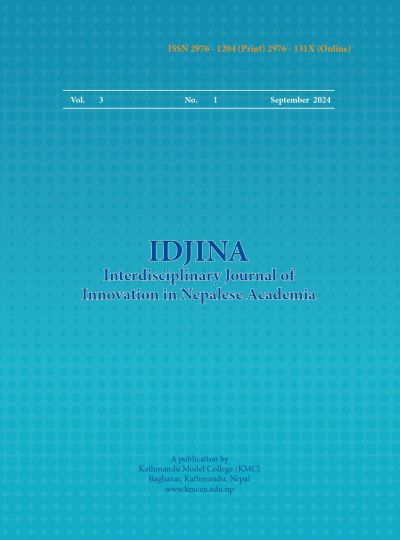Factors Affecting the Internet Banking Adoption in Kathmandu Valley
Keywords:
Innovativeness, internet banking, intention to use, perceived ease of use, perceived riskAbstract
In the rapid evolution of digital technology, the adoption of internet banking has become a crucial component of modern banking services. This paradigm shift towards digitization necessitates understanding the factors influencing internet banking adoption. This study aims to promote extensive adoption of internet banking in the Kathmandu Valley, encouraging financial inclusion and technological advancement in the region. This study examined factors influencing internet banking adoption among SMEs using an explanatory research design and the TAM theory, testing seven hypotheses. Data were gathered from 280 SMEs using a structured questionnaire administered through Kobo Toolbox and analyzed with Partial Least Squares Structural Equation Modeling (PLS-SEM) version 4.0. The results indicate that perceived usefulness, ease of use, and risk significantly impact the intention to use internet banking. Perceived usefulness serves as a mediator between ease of use and subjective norm, influencing their impact on the intention to use. The key challenges identified include system errors, security concerns, trust issues, lack of innovativeness, limited technology access, and awareness gaps. The study suggests the importance of user education, interface simplification, personalization, and enhanced user support to improve secure online transactions.
Downloads
Downloads
Published
How to Cite
Issue
Section
License

This work is licensed under a Creative Commons Attribution-NonCommercial-NoDerivatives 4.0 International License.
This license allows reusers to copy and distribute the material in any medium or format in unadapted form only, for noncommercial purposes only, and only so long as attribution is given to the creator.




